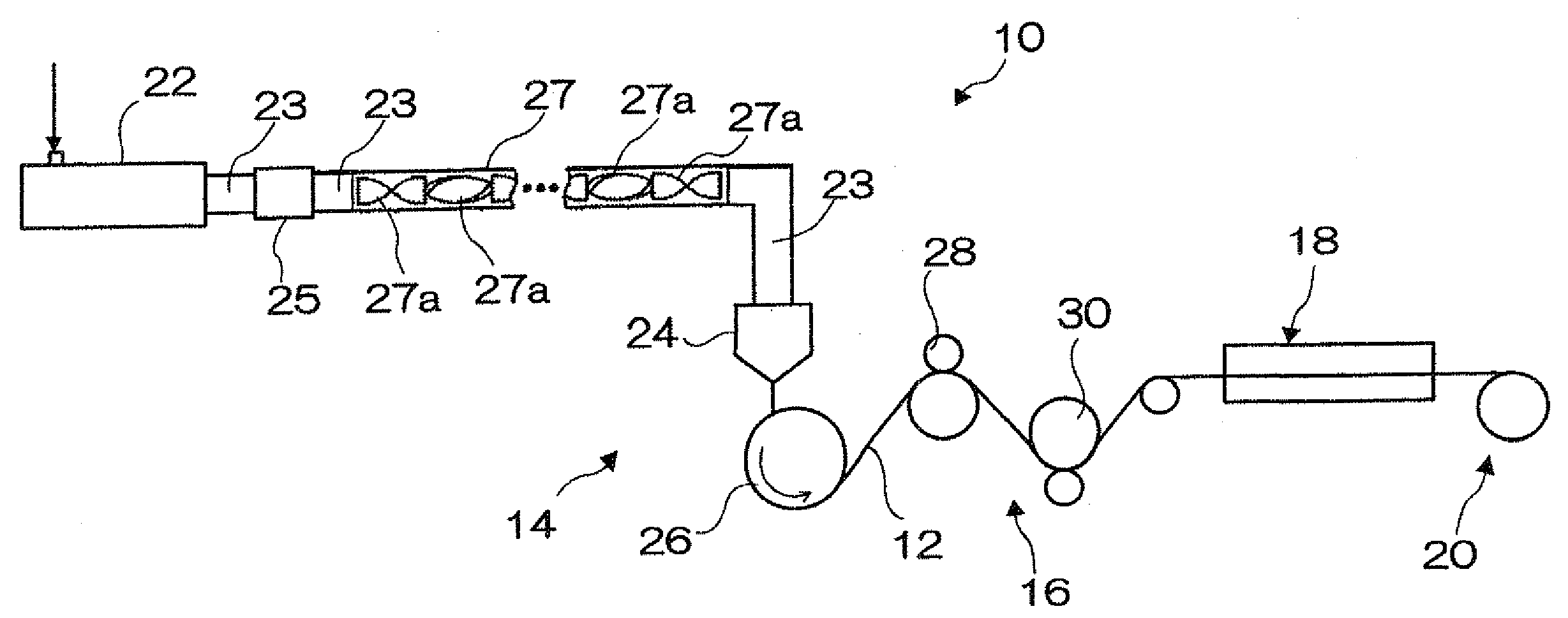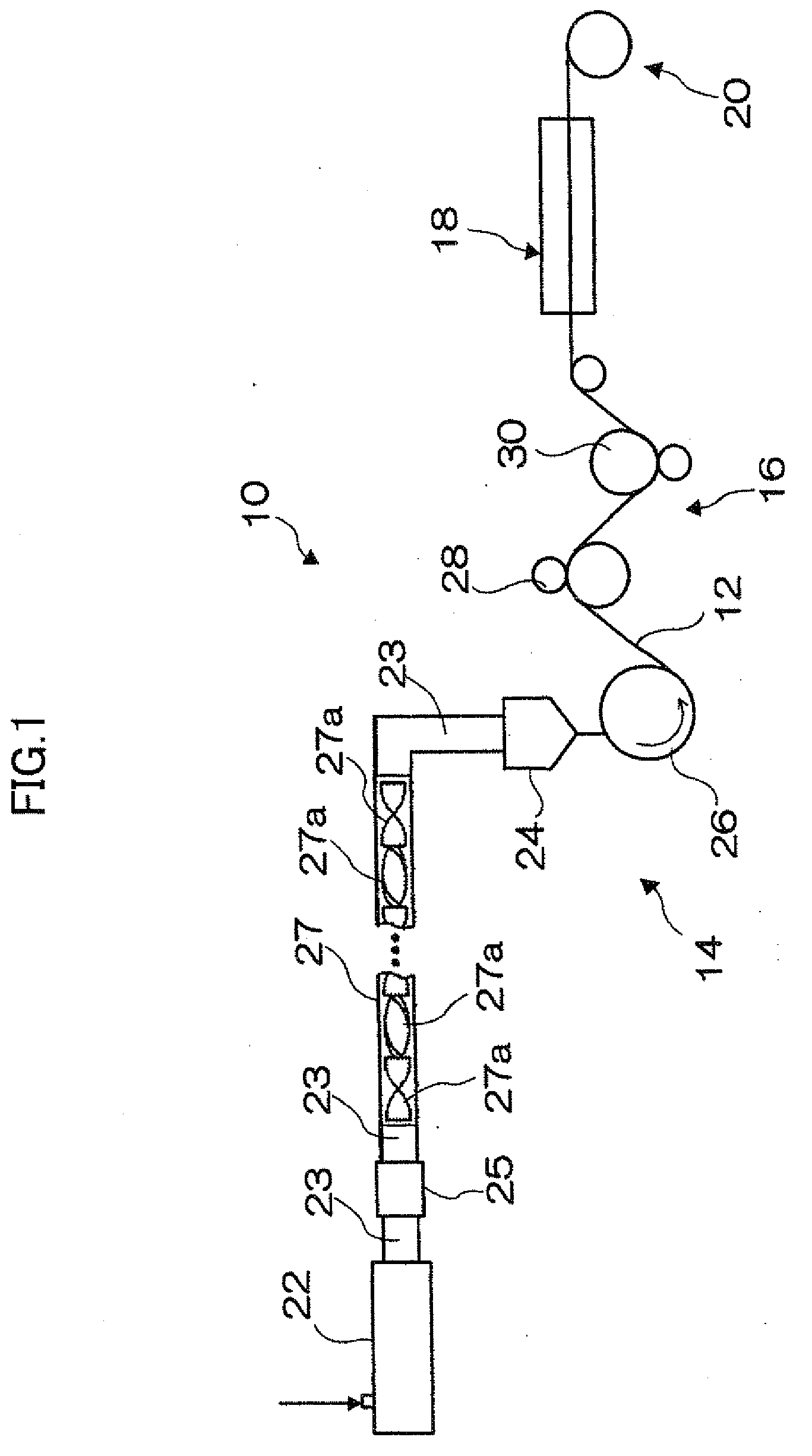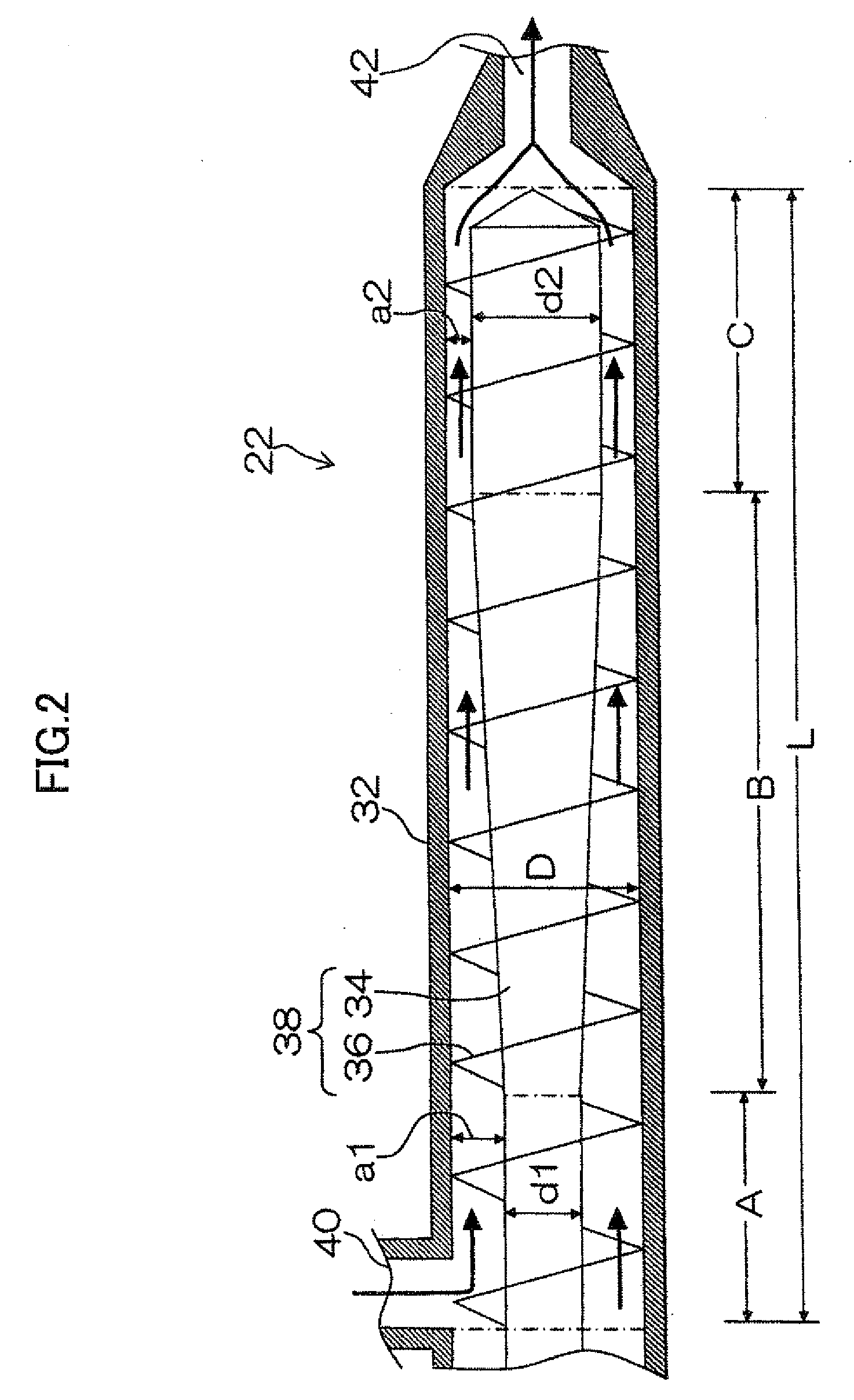Cellulose acylate film, saturated norbornene resin film, and process for producing these
a technology of cellulose acylate and norbornene resin, which is applied in the direction of instruments, polarising elements, other domestic articles, etc., can solve the problems of forming film streaks
- Summary
- Abstract
- Description
- Claims
- Application Information
AI Technical Summary
Benefits of technology
Problems solved by technology
Method used
Image
Examples
synthesis example 1
Synthesis of Cellulose Acetate Propionate
[0122]A 5 L separable flask serving as the reactor which was equipped with a reflux apparatus was charged with 150 g of cellulose (hardwood pulp) and 75 g of acetic acid. The resultant mixture was vigorously stirred for 2 hours while heating with an oil bath having a temperature regulated to 60° C. The thus-pretreated cellulose was swollen and ground to form a fluff. The reactor was cooled by being left to stand for 30 minutes in a 2° C. ice bath.
[0123]Separately, a mixture of 1545 g of propionic anhydride and 10.5 g of sulfuric acid was prepared as an acylating agent and cooled to −30° C. The mixture was then added all at once to a reactor containing the above pretreated cellulose. After 30 minutes, the temperature of the outer equipment was gradually increased, so that the internal temperature was regulated to 25° C. two hours after the addition of the acylating agent. The reactor was cooled in a 5° C. ice bath, so that the internal tempera...
synthesis example 2
Synthesis of Cellulose Acetate Butyrate
[0125]A 5 L separable flask serving as the reactor which was equipped with a reflux apparatus was charged with 100 g of cellulose (hardwood pulp) and 135 g of acetic acid. The resultant mixture was left to stand for one hour while heating with an oil bath having a temperature regulated to 60° C. The mixture was then vigorously stirred for one hour while heating with the oil bath having a temperature regulated to 60° C. The thus-pretreated cellulose was swollen and ground to form a fluff. The reactor is cooled by being left to stand for one hour in a 5° C. ice bath to thoroughly cool the cellulose.
[0126]Separately, a mixture of 1080 g of butyric anhydride and 10.0 g of sulfuric acid was prepared as an acylating agent and cooled to −20° C. The mixture was then added all at once to a reactor containing the above pretreated cellulose. After 30 minutes, the temperature of the outer equipment was increased to 20° C., and the mixture was allowed to re...
examples
1. Formation of a Cellulose Acylate Film or a Saturated Norbornene Resin Film
(1) Preparation of Cellulose Acylate
[0357]The cellulose acylates described in Table 1 of FIG. 5 were prepared. This was carried out by conducting an acylation reaction at 40° C. by adding sulfuric acid as a catalyst (7.8 parts by weight based on 100 parts by weight of cellulose), and then adding a carboxylic acid serving as a raw material for an acyl substituent. At this stage, the type and degree of substitution of the acyl group were controlled by controlling the type and amount of the carboxylic acid. Further, after the acylation reaction, ripening was performed at 40° C. to prepare a sample (the polymerization degree decreases by lengthening the ripening time). The polymerization degrees of the resultant cellulose acylates were determined by the following methods
(Polymerization Degree Determination)
[0358]About 0.2 g of completely dried cellulose acylate was accurately weighed and dissolved in 100 mL of ...
PUM
| Property | Measurement | Unit |
|---|---|---|
| Fraction | aaaaa | aaaaa |
| Length | aaaaa | aaaaa |
| Chemical shift | aaaaa | aaaaa |
Abstract
Description
Claims
Application Information
 Login to View More
Login to View More - R&D
- Intellectual Property
- Life Sciences
- Materials
- Tech Scout
- Unparalleled Data Quality
- Higher Quality Content
- 60% Fewer Hallucinations
Browse by: Latest US Patents, China's latest patents, Technical Efficacy Thesaurus, Application Domain, Technology Topic, Popular Technical Reports.
© 2025 PatSnap. All rights reserved.Legal|Privacy policy|Modern Slavery Act Transparency Statement|Sitemap|About US| Contact US: help@patsnap.com



